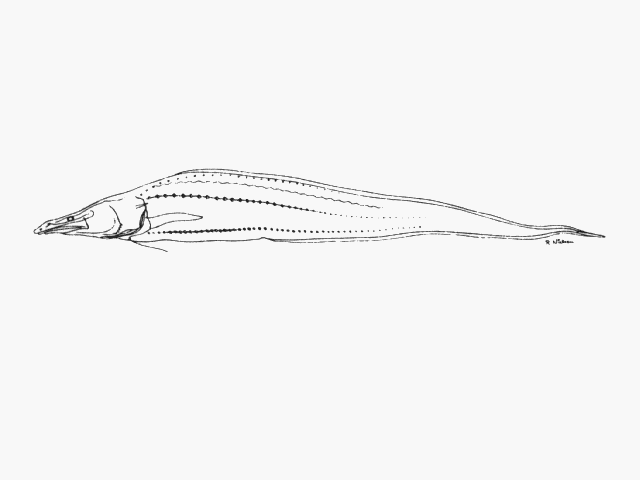| Ophidiidae (Cusk-eels), subfamily: Neobythitinae |
| 35 cm TL (male/unsexed) |
|
bathydemersal; marine; depth range 960 - 3535 m |
| Western Atlantic: from 38°29'030''N, 70°57'W (holotype of P. macdonaldi) southwards through the Gulf of Mexico to 22°45.7'S, 40°19.6'W. East Atlantic: from 34°28'N, 7°43'W southwards through the Gulf of Guinea to 36°06'S, 19°33'E. |
|
Dorsal spines (total): 0-0; Dorsal soft rays (total): 135-158; Anal spines: 0-0; Anal soft rays: 106-122; Vertebrae: 77-83. Penopus microphthalmus differs from P. japonicus by the following characters: has a higher number of dorsal, 135-158 (vs. 117) and anal, 106-122 (vs. 89) fin rays; lower number of preopercular spines, 4-7 (vs. 9); indistinct spine behind the posterior nostril (vs. distinct, 1% SL); by the bigger horizontal diameter of the eye 1.1-1.6% SL (vs. 0.8); and in having an almost fully scaled head (vs. squamation of the head restricted to the middle part of the preopercle) (Ref. 87601). |
| Rare species (Ref. 34024). Oviparous, with oval pelagic eggs floating in a gelatinous mass (Ref. 205). |
|
Least Concern (LC); Date assessed: 09 July 2014 Ref. (130435)
|
| harmless |
Source and more info: www.fishbase.org. For personal, classroom, and other internal use only. Not for publication.
